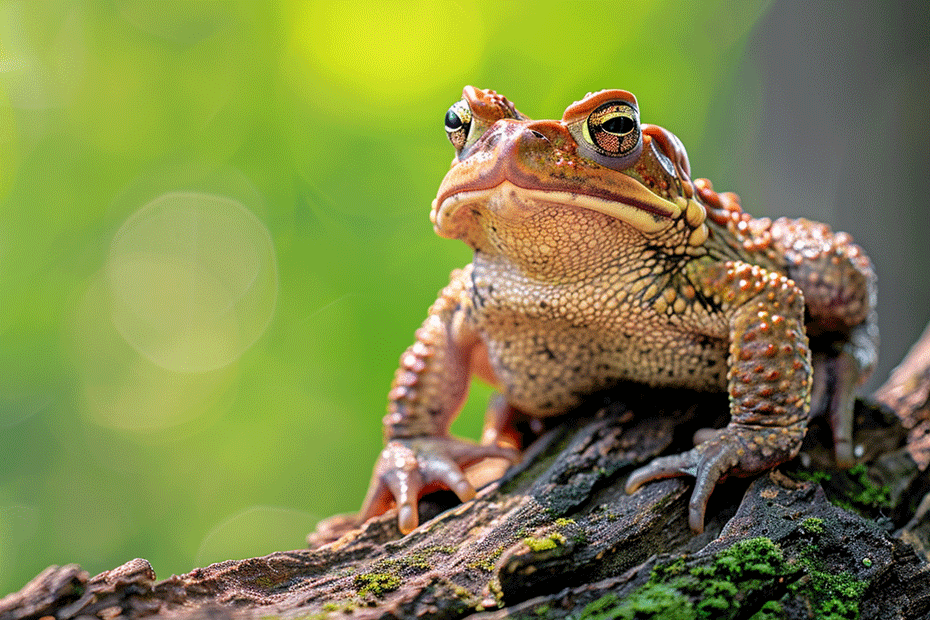Ever wondered where toads live? These fascinating creatures can be found in a variety of habitats around the world. From forests to deserts, toads have adapted to thrive in diverse environments. Understanding their preferred habitats can provide insight into their behavior and survival strategies.
Toads are known for their ability to live both on land and in water. They are commonly found near ponds, lakes, and streams, where they can easily access water for breeding and staying hydrated. But, toads are also found in grasslands, gardens, and even urban areas, showcasing their adaptability to different surroundings.
Exploring the habitats of toads can offer a glimpse into the interconnectedness of ecosystems and the importance of preserving natural environments. By learning more about where toads live, we can appreciate the role they play in maintaining ecological balance and biodiversity.
Key Takeaways
- Toads can be found in a variety of habitats including forests, deserts, ponds, grasslands, gardens, and even urban areas, showcasing their adaptability.
- They seek sheltered spots near water sources for hydration and reproduction, and utilize artificial habitats like parks, ponds, and human-made structures.
- Moist areas are essential for toads’ survival as they rely on these environments to keep their skin hydrated and lay their eggs.
- Climate fluctuations directly impact toad habitats, requiring consistent rainfall and suitable temperature ranges for their metabolism and activity levels.
- Human interference through urbanization, pollution, and habitat destruction poses a significant threat to toad populations, emphasizing the need for conservation and sustainable practices.
Habitat of Toads

Natural Habitat
Toads typically reside in a variety of natural habitats, adapting to diverse environments for survival. Here are some key points about their natural habitats:
- Forests: Toads can be found in forests with ample ground cover and moisture.
- Deserts: Even though the arid conditions, some toad species thrive in desert environments.
- Ponds, Lakes, Streams: These are common habitats for toads, providing water sources essential for breeding.
- Grasslands: Toads inhabit grasslands where they can find shelter and suitable food sources.
- Gardens: Urban and rural gardens can attract toads due to vegetation and insects present.
- Urban Areas: Toads show adaptability by inhabiting urban areas, utilizing available shelter and food resources.
Artificial Habitats
Toads also make use of artificial habitats created by human activities. Here are some examples:
- Parks: Toads can be found in parks that provide green spaces within urban environments.
- Ponds and Fountains: Artificial water features like ponds and fountains may attract toads for breeding or foraging.
- Human-made Structures: Toads may seek shelter in human-made structures within their habitat.
- Golf Courses: Toads might inhabit golf courses due to the open space and water features present.
To understand toads better, it is crucial to comprehend their adaptability and habitat preferences in both natural and artificial environments.
Toads’ Preferred Environments

Moist Areas
Toads thrive in moist habitats like forests, ponds, and streams. They rely on these wet environments for hydration and reproduction.
- Moist areas keep their skin hydrated, aiding in respiration.
- Sheltered spots near water sources provide ideal conditions for toads to lay their eggs.
Sheltered Locations
Toads seek sheltered spots such as under logs, rocks, or vegetation to hide from predators and extreme weather conditions.
- These locations offer protection and help regulate their body temperature.
Factors Affecting Toad Habitats

Climate
Toads are highly susceptible to changes in Climate as it directly impacts their habitat conditions. Extreme temperatures can be detrimental to toads, affecting their behavior and reproductive capabilities. Here’s how climate influences toad habitats:
- Toads require moist environments to keep their skin hydrated, making areas with consistent rainfall or access to water bodies ideal.
- Temperature fluctuations can impact toad metabolism and activity levels, affecting their ability to forage for food and find shelter.
- Extreme heat or cold can force toads to seek refuge in specific microhabitats to regulate their body temperature.

Human Interference
Human Interference poses a significant threat to toad habitats worldwide. Urbanization, pollution, and habitat destruction have drastically altered many toad populations. Consider the following impacts of human activities on toads:
- Urban development encroaches on toad habitats, leading to habitat fragmentation and loss.
- Pollution from chemicals, pesticides, and plastics can contaminate water sources critical for toad survival.
- Alteration of natural landscapes disrupts foraging grounds, breeding sites, and shelter options for toads.
- Road construction poses a direct threat to toads due to increased road mortality and barriers to their movement.
Use this knowledge to advocate for conservation efforts and sustainable practices to safeguard toad habitats for future generations.
Conclusion
Toads’ habitats are greatly impacted by climate conditions and human activities. Climate plays a vital role in their survival, affecting their behavior and reproduction. Human interference, such as urbanization and pollution, poses significant threats to toad populations. Conservation efforts and sustainable practices are crucial to protect these habitats and ensure the continued existence of toads for future generations.

Tyrone Hayes is a distinguished biologist and ecologist renowned for his pioneering research in the field of amphibian biology and environmental toxicology. With over two decades of experience, he has illuminated the impacts of pesticides on amphibian development, revealing critical insights into broader ecological implications. Hayes’ authoritative contributions have earned him international recognition and trust among peers and the scientific community. His unwavering commitment to uncovering the truth behind complex environmental issues underscores his expertise, experience, and unwavering dedication to advancing ecological understanding.
